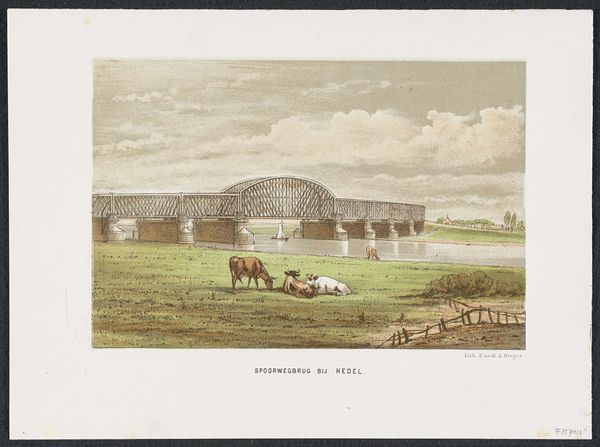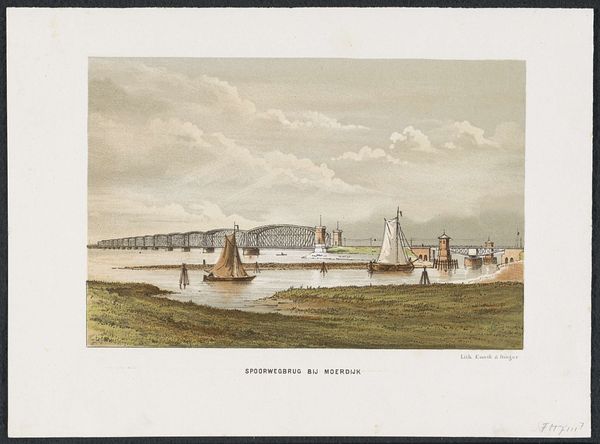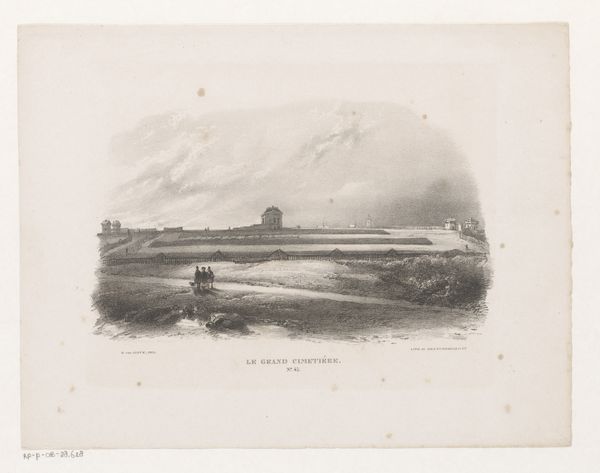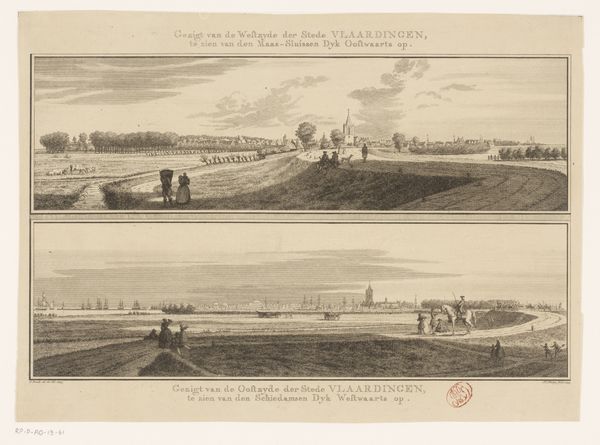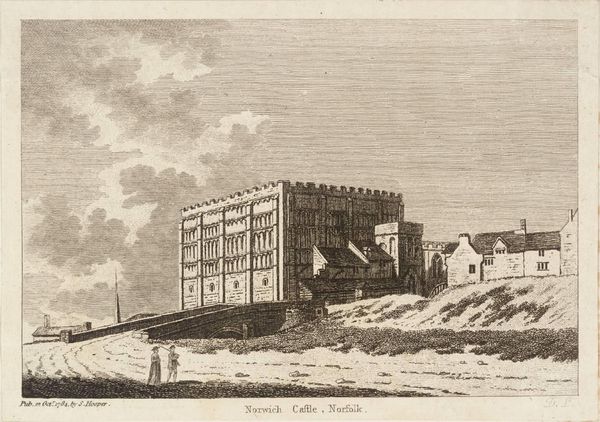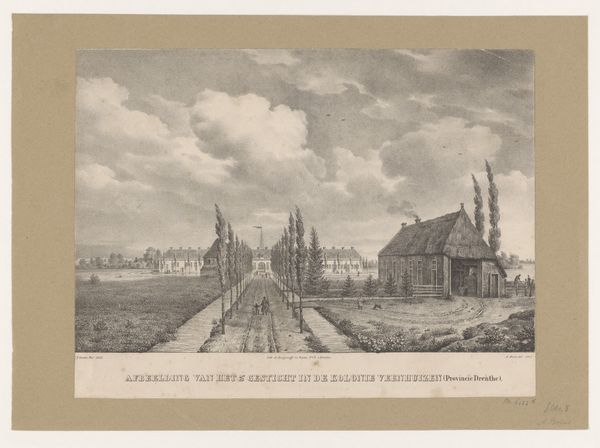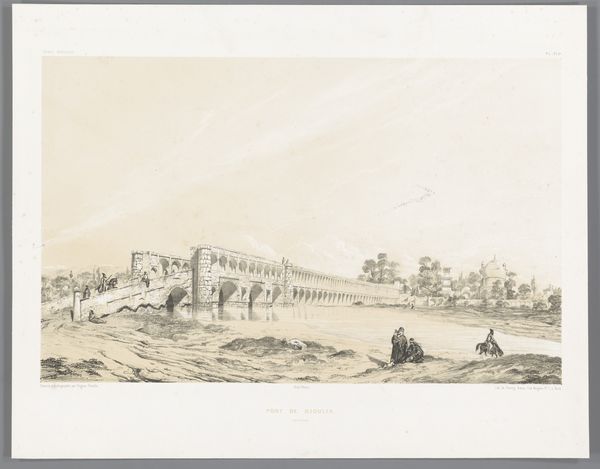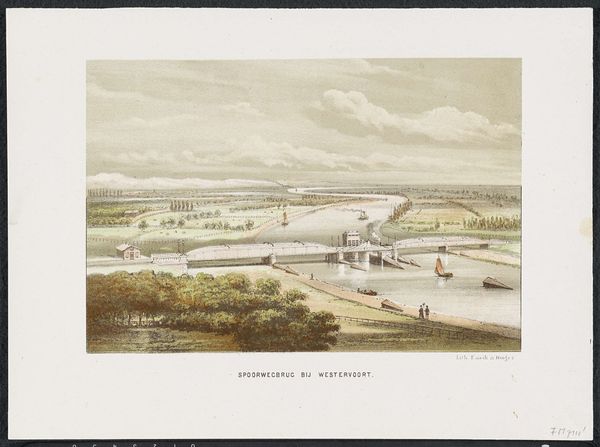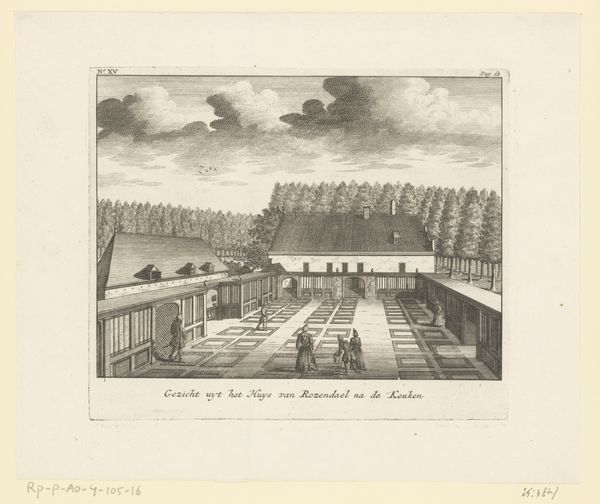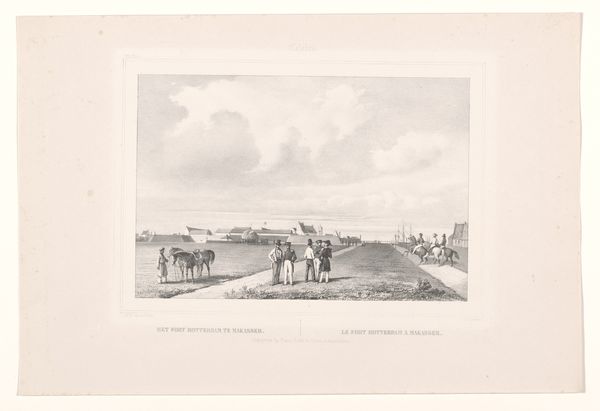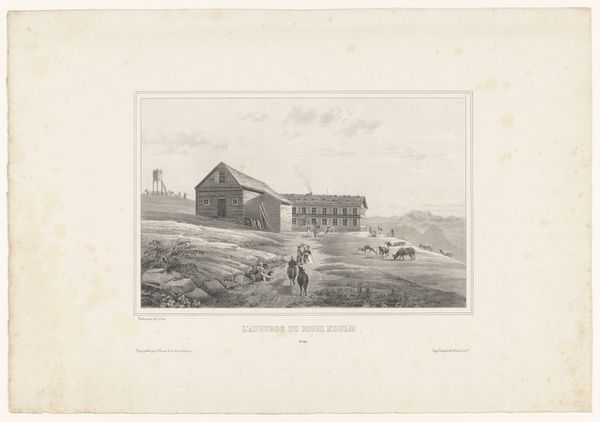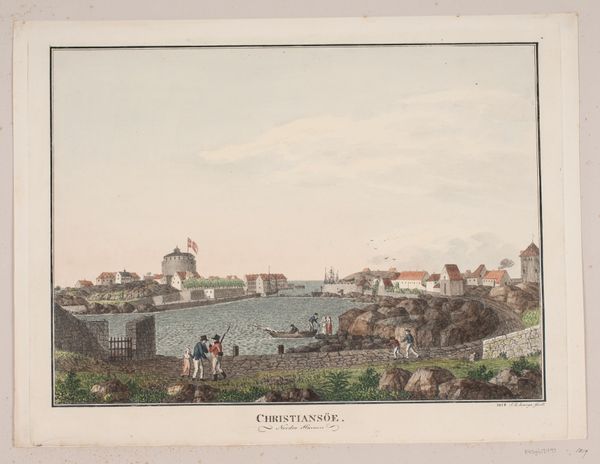
Dimensions: height 215 mm, width 292 mm
Copyright: Rijks Museum: Open Domain
Curator: This is "Oude IJsselbrug bij Zutphen, 1865", created between 1872 and 1874. It’s housed right here at the Rijksmuseum, an interesting example of Romantic landscape in print. Editor: My initial reaction is one of serenity, maybe tinged with a bit of wistful nostalgia. It's a quiet moment captured. The muted colors evoke a certain historical distance, like a faded photograph you find in your grandmother's attic. Curator: That's beautifully put. The choice of Romanticism for the print connects to a larger European trend, where industrial advancement often appeared in concert with a yearning for the past and simpler times. Look how the artist uses delicate lines to render both the imposing iron bridge and the intimate scene of the man and horses on the path. The bridge, though modern for its time, is almost softened, subsumed into the rural scene. Editor: Exactly! The bridge doesn't dominate, does it? It's as if the artist is acknowledging its presence but wants us to focus on the connection between man, animal, and the land. There's an interesting contrast – the solid geometry of the bridge against the organic curve of the river and the rounded forms of the horses. What does this specific bridge symbolize, you think? Curator: Zutphen, being an ancient Hanseatic city, embodies that tension between tradition and progress. A bridge like this literally connects different worlds, facilitating trade and movement, but also changing the pace and scale of life in the area. Editor: It makes me wonder about the people who used it, the stories it could tell. Imagine crossing that bridge, what hopes and fears did they carry with them? And now this image, through its deliberate choice of aesthetic language, conveys those tensions and stories using potent symbolism and a subtle romantic yearning for the past. What a lovely artifact of progress, and pause! Curator: I completely agree. The layering of technological progress and rural life is a key to understand not just the art of the era, but also a way of comprehending broader European culture in that age. Editor: I love the subtle contrast the artist conveys! Curator: As do I!
Comments
No comments
Be the first to comment and join the conversation on the ultimate creative platform.
